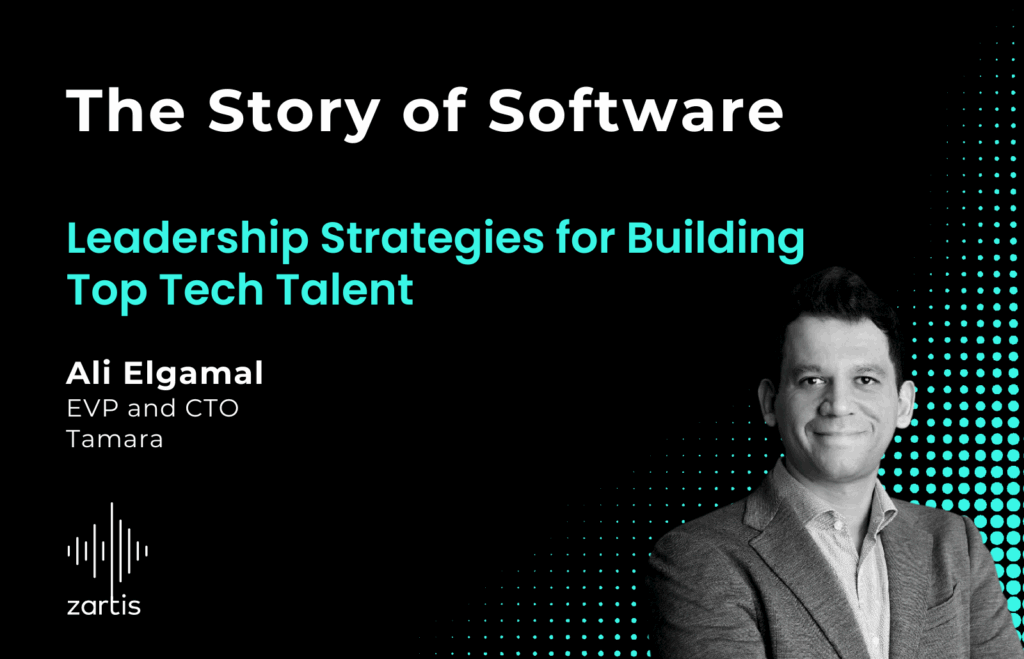The Guest – Kevin Ruthen, CTO at Fora Financial
Kevin Ruthen, CTO at Fora Financial, is responsible for the product & development engineering team, technology platform, and the company’s data exchange and security. Kevin has held many leadership roles including CTO, Head of Technology, and Global Managing Director. He has held these positions across various industries including publishing, consulting, and most recently, the financial services sector.
Successful Technology Leadership
As technology takes a more central role within modern businesses, having a well-run, efficient, and engaged software engineering team can be the difference between success and failure.
Establishing successful leadership – both in terms of processes and culture – is essential to creating well-functioning tech teams. And in an ever-changing business environment, being a successful tech leader is an ever-evolving set of considerations, tasks, and approaches.
Some of the topics covered in this episode include:
- How has the role of a tech leader evolved over the past decades
- The overarching principles of good leadership in technology
- The common mistakes newly appointed tech leaders make, and how to avoid them
- Creating a culture of high performance within technology teams
- Advice for engineers considering to move into the leadership track
- Resources for new or aspiring tech leaders to upskill
Highlight:
Transcript (abridged version):
[…]
Kevin, could you talk us through, from your perspective, what you believe the general principles of good leaders in technology are?
Sure. Certainly, collaboration is essential to that as well as truly transparent and honest communication. I am a big believer in embracing change and improvement for myself, and I want to reinforce that within my team as well.
Being an entrepreneur and acting as an owner while being accountable is another core technology leadership principle that leads to success. Look at ways to disrupt, and always challenge the perception of the norm. I’ve seen the same trap many times with different organizations and businesses I’ve come across, especially with the technology team being quick to turn to their regular solutions and going into their comfort zones, as opposed to looking at doing things a bit differently.
Another principle I’d say to touch upon is really having empathy and being that voice of the customer, internally and externally. Really trying to put yourself in their shoes, being the champions of their voice and seeing things from their perspective and lens. I’d also add that I’m really someone with the technology leadership principle perspective, to lead by example, and to jump in the trenches with the team. Don’t just talk the talk, but walk the walk, and be there with them. This establishes confidence, and quickly in my experience, sets up a way for folks to really embrace you as a leader and as someone that they want to follow.
And, coaching and candid constructive feedback, but being specific and giving examples of what you know, sort of like a sprint retrospective, what those resources did well, and where they need to be reinforced to continue etc.
Lastly, I’ll just say, one of the most important aspects of leadership principles from my perspective is what I’ve learned over time; leadership from the side. How to effectively lead from the side and not always from the front. So what I mean by that is; this entails empowering and supporting others to be able to lead an initiative from the front, while you from the side as a leader provide guidance, encouragement, helping to remove those barriers, and making sure folks have what they need in order to succeed. […]
Kevin, how does technology leadership impact things like product delivery and technical debt? Can you share with us some of the things you’ve seen over your career in this regard?
I think it comes down to challenging the norm and providing key input so that the payout will be significant toward success and mitigate things like technical debt. So, when there’s this highly successful quality product delivery, you can often trace a major cause for that being effective leadership, and this stems from that foundation that has been established by the leader in terms of reinforcing those core principles that we were just talking about – coaching and guidance and really addressing the challenges and hurdles. […]
You touched on the topic of team culture. Could you share with us some insights about how leaders can create a culture of high performance within technology teams?
Actively listening and engaging, emphasizing collaboration, properly empowering the team, and establishing that regular cadence of constructive, candid feedback that I touched upon earlier, as well as learning from and celebrating failure fast.
So you want to make sure to reinforce the need to understand why and how projects are having a direct impact on the business. Don’t underestimate the importance of having a successful culture, and see where there are opportunities for what I call culture hacks – ways to tweak the culture and evolve over time. Because a key mantra that I fully embraced is that culture eats strategy for breakfast. […]
If someone is joining an organization as an externally appointed CTO or head of engineering, what should they do in their first 90 days to make a real impact?
Get up to speed and understand the business as much as possible. Work to establish and foster relationships with all business areas, stakeholders and make sure to emphasize that you’re looking to establish a true partnership. I can’t emphasize that enough. Listen and dig into what are their key objectives and the pain points, and then look to assess and identify where those gaps are and how they can best be addressed and fully aligned to technology deliverables with strategic business objectives tied to them. Prioritize those initiatives with the highest impact across the different business areas.
I’d also say, look to assess the technology environment and the resources, and develop an action plan to quickly accommodate the needs and the gaps that you’ve identified.
And, always look to identify some low-hanging fruit, i.e. those quick wins to establish confidence and to act as that Springboard towards the future and further success.
[…]
You can find The Story of Software podcast on:
Apple Podcasts, Spotify, Stitcher, Deezer, & any other podcast platform of your choice.
We hope you enjoy listening to this tech podcast and feel free to share any feedback with us: podcast@zartis.com
The Story of Software Podcast is produced by Zartis.






